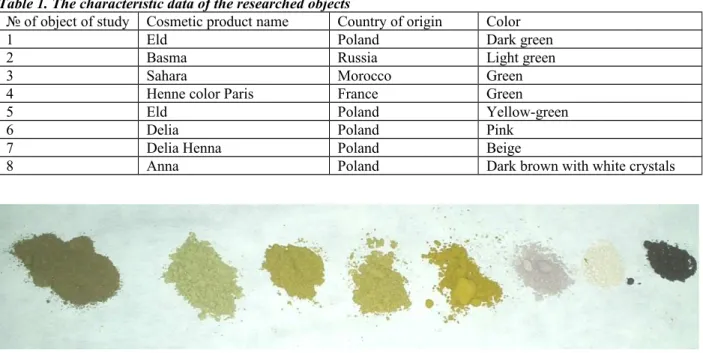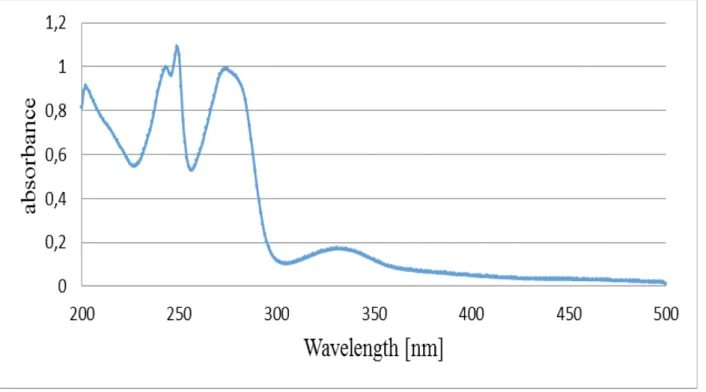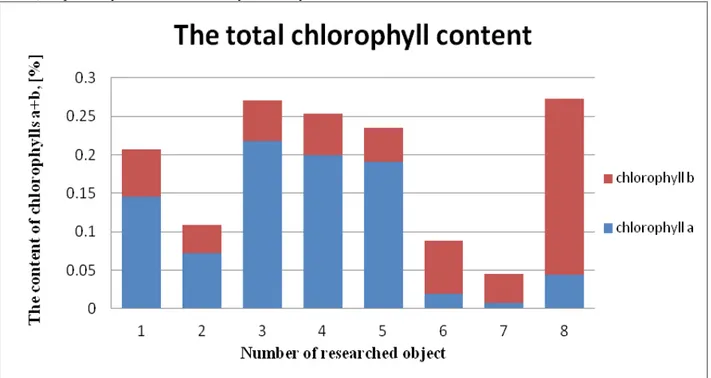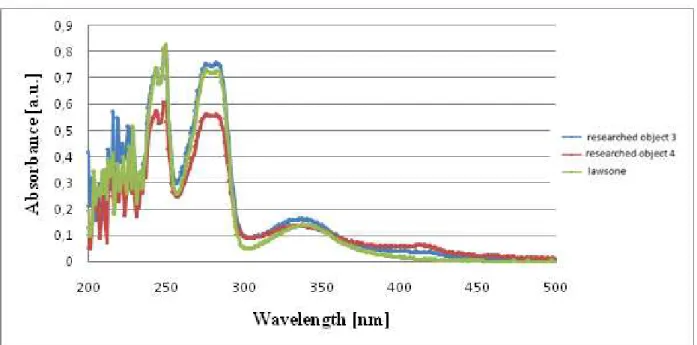www.imiamn.org.ua /journal.htm
УДК 615.322:54.062:543.42
PHYTOCHEMICAL STUDY OF COSMETICS FOR HAIR COLORING
Pietrzyk1 D., Paradowska1 K.,
Wawer1 I., Diakonova2* Ia.
1Medical University of Warsaw, Faculty of
Pharmacy with The Laboratory Medicine Division, Poland, 02-097 Warsaw, 1 Banacha Str.
2National University of Pharmacy, Ukraine,61168
Kharkov, 4 Blucher Str. *ianadiakonovaiana@yandex.ua
Introduction
Lawsonia inermis (Henna) belongs to the family of Lythreaceae. It is a glabrous branched shrub or small tree (from 2m to 6m high). The leaves are small, sub-sessile, and greenish brown to dull green in color, and have either a glabrous, obtuse or acute apex with a tapering base. Flowers are small of white or pink color, assembled into complex shields. The fruit is a many-seeded capsule. Henna is a plant native of North Africa, Asia and Australia. It’s also naturalized and cultivated in the tropics of America, Egypt, India and parts of the
Middle East [1, 2, 3]. The most commonly used raw material of Henna is leaves (Lawsoniae Folia). This raw material is used as a basis for hair and skin dyes. Leaves contain flavonoids (glycosides of apigenin and luteolin), anthocyanins, alkaloids, coumarins, sterols, xanthoproteic and terpenoids [4, 5, 6]. Lawsone (2-hydroxy-1,4-naphthoquinone), also known as hennotannic acid, is a compound responsible for the coloring properties of Henna leaves and marker.
Henna-based cosmetic products are becoming increasingly popular. They can be used during pregnancy, lactation as well as for temporary children’s tattoo. However, the content of some cosmetic products does not always contain composition declared on their package. For example, some cosmetic products contain either no or the scruple of henna leaves.
The aim of this work is to develop quality control methods, allowing determining the naturalness of the composition of hair coloring cosmetic products, as well as the presence of lawsone and its quantitative content.
Material & methods
The researched objects were eight hair coloring cosmetic products. The characteristic data of these objects is presented in Table 1 and Figure 1. The spectrophotometer UV-vis Evolution 60S was used in our phytochemical studies.
Table 1. The characteristic data of the researched objects
№ of object of study Cosmetic product name Country of origin Color
1 Eld Poland Dark green
2 Basma Russia Light green
3 Sahara Morocco Green
4 Henne color Paris France Green
5 Eld Poland Yellow-green
6 Delia Poland Pink
7 Delia Henna Poland Beige
8 Anna Poland Dark brown with white crystals
Fig. 1 Photography of the researched objects, located in the sequence from 1 to 8.
The quantitative content of chlorophyll a (Chla) and b (Chlb) was determined in methanolic extracts by spectrophotometric method, using the methodology proposed by K. Miazek [7]. The quantitative content of chlorophyll a (Chla) and b (Chlb) was calculated based on the following formulas:
Chla=16,72*A665 – 9,16*A652
Chlb=34,09*A652 –15,28*A665,
where A665 is the absorbance value at the wavelength of
light of 665 nm and A652 is the absorbance value at the
wavelength of 652 nm.
By using well-known methods [3], methanolic and aqueous extracts were obtained from the studied objects. The extracts, then, were purified to obtain dry residues containing lawsone. Hair color pastes were obtained according to the instructions on the packages of researched products, and finally chloroform extracts were obtained from these pastes.
Annals of Mechnikov Institute, N 2, 2015 52 www.imiamn.org.ua /journal.htm
experimentally on the basis of the spectra of the standard sample of lawsone dissolved in methanol (methanolic extracts) and in water with the addition of
aqueous NaHCO3 (aqueous extracts). These spectra are
presented in Figures 2, 3.
Fig. 2. The spectrum of the methanolic solution of the standard sample of lawsone.
Fig. 3. The spectrum of the aqueous solution of the standard sample of lawsone.
The quantitative content of polyphenolic compounds in methanolic and aqueous extracts of the researched objects in terms of gallic acid was performed by the spectrophotometric method at the wavelength of 765 nm using the technique of Folin - Ciocalteau. The
www.imiamn.org.ua /journal.htm
Fig. 4. The calibration graph for gallic acid.
Results & discussion
The total content of chlorophyll in the samples 1-8 (Figure 5) was determined by spectrophotometric method. The resulting calculated ratio of chlorophyll a to chlorophyll b for researched objects 1-8 was 1 - 2.35, 2 – 2.0, 3 – 4.05, 4 – 3.76, 5 – 4.29, 6 – 0.28, 7 – 0.21, 8 – 0.19, respectively. It is known that synthetic dyes as
well as chlorophylls can exhibit absorbance at wavelengths of 665 and 652 nm. However, given the fact that in higher plants the ratio of chlorophyll a to chlorophyll b is about 3:1 [6], it can be argued that the samples 6, 7, 8 are synthetic, as also is suggested by their color (Figure 1). However, the samples 1-5 contain substances of a plant origin.
Fig. 5. The chart of quantitative content of chlorophyll a and b in the researched objects.
When comparing the spectra of methanolic and aqueous extracts of the samples and the spectra of methanolic and aqueous solutions of the standard sample of lawsone, it was observed that methanol extracts of samples 1, 2, 6, 7, 8 did not have characteristic peaks at 249 and 275 nm, while the spectra of the methanolic extracts of samples 3, 4 showed peaks around 275 nm and only the spectrum of the methanolic extract of the sample 5 exhibited peaks
Annals of Mechnikov Institute, N 2, 2015 54 www.imiamn.org.ua /journal.htm
Fig. 6. Spectra of chloroform solutions of lawsone standard sample and chloroform extract of prepared hair color pastes (the researched objects 3 and 4).
Fig. 7. Spectra of chloroform solutions of lawsone standard sample and chloroform extract of prepared hair color pastes (the research object 5).
Using calibration graph data for methanolic and aqueous solutions of lawsone, the quantitative content of lawsone in methanolic and aqueous extracts of researched objects 3, 4, 5, as well as in methanolic and aqueous solutions of dry residues, obtained after purification of these extracts was determined by the spectrometric method. Quantitative content of lawsone in the methanolic extracts of samples 3, 4, 5 was 3.9, 4.5%, 5.9%, respectively, at the wavelength of 249 nm and 3.7%, 4.3%, 6.7%, respectively, at 275 nm. Quantitative content of lawsone in aqueous extracts (without adding NaHCO3) of samples 3, 4, 5 was 6.5%,
5.2%, 5.8%, respectively, and 9.2%, 8.6%, 7.9%,, respectively, for aqueous extracts with the addition of NaHCO3. Quantitative content of lawsone in the dry
residues after extraction with methanol and subsequent purification in samples 3, 4, 5 was 3.9%, 1.7%, 3.5%,
respectively. Quantitative content of lawsone in the dry residues after water extraction and subsequent treatment in samples did not change.
The quantitative content of polyphenols expressed in terms of gallic acid in methanolic and aqueous extracts of the researched samples was determined by spectrophotometric method using the calibration graph data of the gallic acid solution (Figure 8). The highest content of polyphenolic compounds (in mg/g) found in the methanolic extracts of samples 8, 5, 4 and 3 was 83.3, 71.1, 65.2 and 59.3, respectively. The lowest content of polyphenolic compounds was found in aqueous extracts with the addition of NaHCO3 solution
www.imiamn.org.ua /journal.htm
Fig. 8. The chart of quantitative content of polyphenolic compounds in the methanolic and aqueous extracts of the researched objects.
Conclusions
The paper considered eight hair coloring cosmetic products present at Polish market using spectrophotometric methods with the goal of detecting lawsone and determining its content. The main finding are summarized next.
1. The determination of chlorophyll content using UV-spectrometric method cannot be applied for identification to samples of plant origin, which is due to the fact that synthetic dyes can have their own absorbance at the wavelength characteristic of chlorophylls a and b absorbance. Thus, it is necessary to determine the quantitative content of chlorophylls using more sensitive techniques, such as high-performance liquid chromatography - HPLC, or to determine the ratio of chlorophylls a and b contained in the sample. Based on the ratio of chlorophylls a and b in the researched objects, it was concluded that the samples 1-5 contain components of plant origin.
2. The comparison of the spectrum of a chloroform solution of the lawsone (standard sample) with the spectra of chloroform solutions of dry residue after purification of the methanolic and aqueous extracts and chloroform extracts from pastes (prepared for hair coloring) allows stating that only three cosmetic products, e.g. 3, 4, and 5 contain lawsone. Spectra of aqueous extracts of the samples cannot be used for qualitative determination of lawsone, while the spectra of methanolic extracts can be used only as an auxiliary means, because they do not provide a definite answer. 3. The measurement of the concentration of lawsone in the aqueous and methanolic extracts by spectroscopic method does not give plausible results, as these extracts (except lawsone) contain substances that have their own absorption at the same wavelengths as lawsone. This method can be used to quantify lawsone only after purification of the extracts.
4. The analyzed samples 3, 4 and 5 have approximately the same concentration ratios of polyphenolic compounds in the methanolic and aqueous extracts. This fact confirms that the raw material of the same plant is present in the cosmetic materials. Samples 1 and 2 are characterized by a smaller content of polyphenols. 5. The researched samples 6, 7 and 8 contain only synthetic components, whereas the samples numbered 1-5 contain components of plant origin. The analyzed samples 3, 4 and 5 contain leaves of Lawsonia inermis. The sample 2 may contain leaves of Indigofera tinctoria, and the sample 1 likely contains leaves of Eclipta alba or another unknown plant.
The results of this phytochemical study of cosmetics for hair coloring can be used to establish quality control methods for this type of products.
References
1. Makhija, I. K. Lawsonia inermis – from traditional use to scientific assessment [Text] / I. K. Makhija, S. Vijay Kumar, D. Raviraj, K. Devang, M. Nishant, Ch. Sandeep // African Journal of pharmaceutical sciences and pharmacy. – 2011. – 2 (1). – 145-165.
2. Zhuravel, I.O. The study of quantitative content of lawsone in the henna leaves / Zhuravel I.O. [Text] // Ukrainian medical almanac. – 2012. – 15 (6). – 61-62. 3. Ashnagar, A. Isolation and characterization of 2-hydroxy-1,4-naphtoquinone (lawsone) from the powdered leaves of henna plant marketed in Ahwaz city of Iran / A. Ashnagar, A. Shiri [Text] // International Journal of ChemTech Research. – 2011. – 3 (4). – 1941-1944.
4. Sudharameshwari, K. Antibacterial screening of Aegle marmelos, Lawsonia inermis and Albizzia libbeck [Text] / K. Sudharameshwari, J. Radhika // African journal of traditional, complementary and alternative medicines. – 2007. – 4 (2). – 199-204.
5. Chaudhary, G. Lawsonia inermis Linnaeus: A
Annals of Mechnikov Institute, N 2, 2015 56 www.imiamn.org.ua /journal.htm
G. Chaudhary, S. Goyal, P. Poonia [Text] // International Journal of Pharmaceutical Sciences and Drug Research. – 2010. – 2 (2). – 91-98.
6. Zhuravel, I. O. Chemical study of some phenolic compounds from the leaves of Lawsonia Inermis L./ I. O. Zhuravel, Kyslychenko V.S., Bucharina E.V. [Text] // Ukrainian medical almanac. – 2010. – 13 (6). – 70-72.
7. Miazek, K. Chlorophyll extraction from harvested plant material / K. Miazek [Electronic resource] //
Access mode:
http://chps.fsid.cvut.cz/pt/2011/pdf/1100011-1.pdf
PHYTOCHEMICAL STUDY OF COSMETICS FOR HAIR COLORING
Pietrzyk D., ParadowskaK.,
Wawer I., Diakonova Ia.
Introduction Henna-based cosmetic products are
becoming increasingly popular. They can be used during pregnancy, lactation as well as for temporary children’s tattoo. The aim of this work is to develop quality control methods, allowing determining the naturalness of the composition of hair coloring cosmetic products, as well as the presence of lawsone and its quantitative content.
Material & methods The researched objects were eight hair coloring cosmetic products. The spectrophotometer UV-vis Evolution 60S was used in our phytochemical studies. The quantitative content of chlorophyll a and b was determined in methanolic extracts by
spectrophotometric method, using the methodology proposed by K. Miazek. By using well-known methods, methanolic and aqueous extracts were obtained from the studied objects. The extracts, then, were purified to obtain dry residues containing lawsone. Hair color pastes were obtained according to the instructions on the packages of researched products, and finally chloroform extracts were obtained from these pastes.Quantitative content of lawsone in methanolic and aqueous extracts and dry residues after cleaning of the extracts were determined by the spectrophotometric method. The wavelengths at which the solution of lawsone gives absorption maxima were determined experimentally on the basis of the spectra of the standard sample of lawsone dissolved in methanol (methanolic extracts) and in water with the addition of aqueous NaHCO3
(aqueous extracts).The quantitative content of polyphenolic compounds in methanolic and aqueous extracts of the researched objects in terms of gallic acid was performed by the spectrophotometric method at the wavelength of 765 nm using the technique of Folin - Ciocalteau. The gallic acid (by virtue of absorbance dependence on concentration) was used as a standard sample to construct the calibration graph.
Results & discussion The total content of chlorophyll in the samples was determined by spectrophotometric method. The resulting calculated ratio of chlorophyll a to chlorophyll b for researched objects 1-8 was 1 - 2.35, 2 – 2.0, 3 – 4.05, 4 – 3.76, 5 – 4.29, 6 – 0.28, 7 – 0.21, 8– 0.19, respectively. However, the samples 1-5 contain substances of a plant origin.
Quantitative content of lawsone in the methanolic extracts of samples 3, 4, 5 was 3.9, 4.5%, 5.9%, respectively, at the wavelength of 249 nm and 3.7%, 4.3%, 6.7%, respectively, at 275 nm. Quantitative content of lawsone in aqueous extracts (without adding NaHCO3) of samples 3, 4, 5 was 6.5%, 5.2%, 5.8%,
respectively, and 9.2%, 8.6%, 7.9%, respectively, for aqueous extracts with the addition of NaHCO3.
Quantitative content of lawsone in the dry residues after extraction with methanol and subsequent purification in samples 3, 4, 5 was 3.9%, 1.7%, 3.5%, respectively. Quantitative content of lawsone in the dry residues after water extraction and subsequent treatment in samples did not change. The highest content of polyphenolic compounds (in mg/g) found in the methanolic extracts of samples 8, 5, 4 and 3 was 83.3, 71.1, 65.2 and 59.3, respectively. The lowest content of polyphenolic compounds was found in aqueous extracts with the addition of NaHCO3 solution of researched objects 7
and 2, amounting 6.8 and 13.7, respectively.
Conclusions Based on the ratio of chlorophylls a and b in the researched objects, it was concluded that the samples 1-5 contain components of plant origin. Spectra of aqueous extracts of the samples cannot be used for qualitative determination of lawsone, while the spectra of methanolic extracts can be used only as an auxiliary means, because they do not provide a definite answer. The measurement of the concentration of lawsone in the aqueous and methanolic extracts by spectroscopic method does not give plausible results, as these extracts (except lawsone) contain substances that have their own absorption at the same wavelengths as lawsone. This method can be used to quantify lawsone only after purification of the extracts.The results of this
phytochemical study of cosmetics for hair coloring can be used to establish quality control methods for this type of products.




